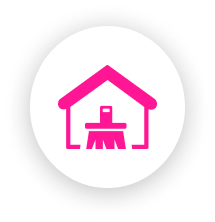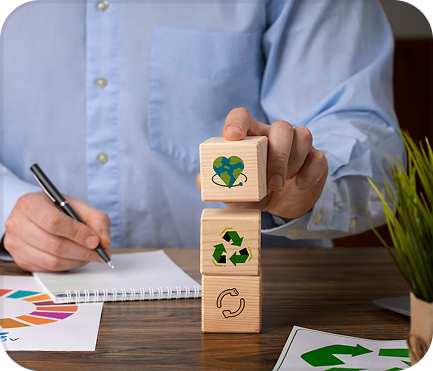Design


Circular Design
Circular Design redesigns products to prolong life, minimise waste and potential loss of technical (man-made) materials. This means companies can design a product that has certain functionalities to ensure components can be reused, materials can be reprocessed and breakages can be repaired.
As redesign is part of the Circular Rs, its importance cannot be underestimated. Yet all too often we focus on the design itself rather than the core skills designers should have to deliver circular outcomes.
Redesign – An Economic Function of the Circular Economy
Circular design is all about the materials used, whatever we are talking about. 80-90% of a product’s environmental impacts are determined at the design and raw material/component production phase. In an ideal circular model, once a product has reached the end of its lifecycle, the materials are reclaimed and reused.
The product and the company making the product also have no side effects on the users and their local environment – so no harmful chemicals in the products are released during use as by-products from manufacturing or the supply chain. Because of the different functional needs and expectations of objects, there is no definitive answer for something to be circular.


The product and the company making the product also have no side effects on the users and their local environment – so no harmful chemicals in the products are released during use as by-products from manufacturing or the supply chain. Because of the different functional needs and expectations of objects, there is no definitive answer for something to be circular.
Videos
Product Design
Design Decisions
Material Decisions
Life Cycle Assessment

Design Competencies for a Circular Economy
We believe circular design will be the magic enabler for the circular economy to gain more traction. Expanding a designer’s core competencies should be our focus rather than the art of design. “We made parts really cheap because we wanted to enable repairability so that people can just buy them for repair but that… (made it) really difficult to make any take-back program for them because there is no money to get back those parts”.
For example, in general designing circular solutions requires a level of business knowledge. “It has become clear to me how important the link is between the business aspect and the design. That the (product) design, is only a part of the challenge…It also has a lot to do with how your income and expenses, your revenue streams are structured.”
In 2020, four researchers published a paper titled, ‘Circular Economy Competencies for Design‘. First, the researchers discovered that the emphasis on prolonged and extended use of products requires designers to master a range of additional skills such as Design for Recovery, Design for Multiple Use cycles and Circular Impact Assessment, etc.

Second, they found systems thinking competency in practice, although in the literature it is mentioned as a relevant competency for design for a circular economy. Lastly, methods and tools to address the identified competencies are largely lacking or are in a premature stage of development is design cirrculum. They concluded that design for a circular economy is an upcoming, independent field in the design for sustainability field that requires specific competencies, methods, and tools.
Fact Sheets
These Fact Sheets provide insights, trends and ideas on the circular economy in Asia and across the world. They are created for our #CircularOctober campaign. For the complete list, visit the Fact Sheets page; click on the image to download.
Rethinking Language
Circular Building – Design for Deconstruction
Circular Design – Where to Start?
Product Design
What is Eco Design?
The Info Knowledge Centre
In this section there an extraordinary amount of information, including research and reports covering finance, ideas, legal, metrics & monitoring, policy, presentations, social value, systems thinking, tools and publications from Walter Stahel, plus images and infographics.
References:
‘Circular Economy: Competencies for Design’ by Deborah Sumter, Jotte de Koning, Conny Bakker and Ruud Balkenende, Faculty of Industrial Design Engineering, Delft University of Technology, 2020
‘What Does Circular Design Actually Mean‘ by Richard Ferris, Flokk Content Manager, 11 July 2022.
Factsheet Design icon: Eucalyp from Flaticon
References:
Product design: Freepik from Flaticon
Knowledge Centre: Freepik from Flaticon
Information: CleanPNG
Video: Freepik
Modular Design (jigsaw puzzle): Shareicon.net
Service Design: Daniel Falk from The Noun Project
Administrative Tools: Shareicon.net
Case Study: Freepik from Flaticon












